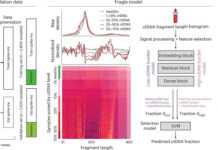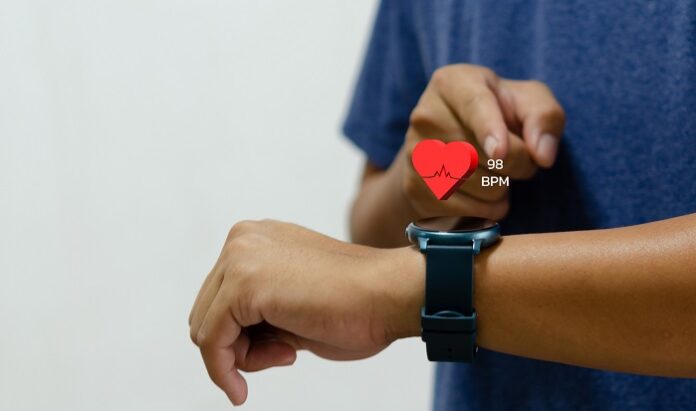Abstract
A smartwatch is a small hand wearable computing device that resembles a traditional wristwatch but offers diverse functionalities. They are becoming more popular because of their ease and capacity to interface with other devices and services in our daily lives. Smartwatches have surpassed their primary purpose of merely telling time, they have now become an integral part of modern life, serving as a multifunctional device capable of various tasks including communication, navigation, and fitness tracking. Smartwatches provide their users, the convenience of continuous health monitoring without the need for additional gadgets. Continuous health tracking facilitated by smartwatches helps in the early detection of several ongoing health issues. Smartwatches offer a source of concrete motivation by setting individualized goals, measuring success achieved, and providing regular feedback. Accuracy and reliability, data security concerns, lack of standardization, and cost may pose difficulty in wider adaptation. Using the full potential of smartwatches in healthcare necessitates addressing key challenges related to accuracy, privacy, ethical considerations, standardization, and user engagement. Advancements in sensor capabilities, integration with artificial intelligence and machine learning, and expansion of health monitoring features may further broaden the future scope of these devices.by smartwatches helps in the early detection of several ongoing health issues. Smartwatches offer a source of concrete motivation by setting individualized goals, measuring success achieved, and providing regular feedback. Accuracy and reliability, data security concerns, lack of standardization, and cost may pose difficulty in wider adaptation. Using the full potential of smartwatches in healthcare necessitates addressing key challenges related to accuracy, privacy, ethical considerations, standardization, and user engagement. Advancements in sensor capabilities, integration with artificial intelligence and machine learning, and expansion of health monitoring features may further broaden the future scope of these devices.
Keywords:data privacy, health tracking, smartwatch, wearable electronic devices
Conflict of Interest: None declared
Source of Support: None declared
Introduction
A smartwatch is a small hand wearable computing device that resembles a traditional wristwatch but offers diverse functionalities beyond only timekeeping. These devices often connect to a smartphone or other devices via a wireless connection.They are becoming more popular because of their ease and capacity to interface with other devices and services in our daily lives.Smartwatches are increasingly being used as a fashion or status symbol, especially among youth. Various stable brands now procure smartwatches as business expansion. Smartwatches have surpassed their primary purpose of merely telling time, they have now become an integral part of modern life, serving as a multifunctional device capable of various tasks including communication, navigation, and fitness
1, Senior Resident, Department of Community Medicine, BRD Medical College, Gorakhpur, UP, India; 2 Assistant Professor,
Department of Community Medicine, BRD Medical College, Gorakhpur, UP,
India; 3 Associate Professor, Department of Anaesthesiology, All IndiaInstitute of Medical Sciences, Gorakhpur, UP, India;
Corresponding Author: Dr Imran Ahmed Khan Email: ikhan0046@gmail.com
tracking.[1,2] Among their diverse functionalities, health tracking stands out as a prominent feature, with smartwatches being increasingly used to monitor many elements of health and well-being.[3] This article aims to explore the evolving role of smartwatches in health tracking, highlighting both the opportunities they offer and the challenges they encompass.
Historical background and current market of smartwatches
AI and ML can help enhance technological adThe concept of wearable health tracking devices is not new technology. It has evolved. A few companies e.g. Casio developed calculators or ‘data bank’ watches in the 1980s. Microsoft and Sony developed basic wrist-mounted notification devices.[4] However, these devices were more primitive and did not receive widespread adoption. Companies like Apple, Samsung, and Google started integrating health-tracking features into smartwatches. Sensors such as heart rate monitors, GPS, and accelerometers enabled more thorough health tracking right from the wrist giving more acceptance. Later, integration into health ecosystems, with features like the ability to sync data with smartphones and cloud-based health platforms provided further advancement. The market growth of wearable devices increased from 16 to 73 billion USD between 2016 to 2022 globally. Smartwatches have a market demand equivalent to smartphones. There was a sudden rise in the global smartwatches market as it reached USD 41.44 million in 2017 and is estimated to attain USD 198.90 million by 2026.[5]
Working of smartwatches
Advanced algorithms in smartwatches for personalized health data tracking use a combination of sensor data, artificial intelligence, and machine learning.[6] These algorithms combine data from a variety of sensors, including accelerometers, heart rate monitors, and GPS, to provide a comprehensive output of the user’s activity and physiological indices. Artificial intelligence and machine learning techniques analyze this data to provide relevant insights. Biometric analysis algorithms capture and interpret physiological signals. Activity recognition algorithms categorize movements and estimate parameters like step count, distance, and workout intensity. Sleep analysis algorithms track sleep patterns and stages, detecting disturbances and providing recommendations for enhanced sleep quality. Similarly, using user feedback systems, algorithms are refined based on interactions and preferences. Ultimately, these combined efforts provide users with actionable insights and individualized recommendations to help them better manage their holistic health and well-being.
Opportunities
Convenience and Continuity: Smartwatches provide their users, the convenience of continuous health monitoring without the need for additional gadgets. Users may easily track their heart rate, sleep habits, physical activity, and other metrics in real time with the help of the internal sensors of the device. [7] This information keeps users motivated to achieve their fitness goals. Non-invasive nature, no maintenance cost, and portable size help in the continuity of these devices.
Personalized Health Data Tracking: Smartwatches are provided with advanced algorithms thatanalyze the collected data continuously to provide users with personalized health insights. By assessing metrics such as heart rate variability, sleep quality, and activity levels, smartwatchescan offer valuable guidance to users, in making informed decisions about their health and lifestyle. [8] Sleep tracking enables individuals to better understand their sleep patterns, discover areas for improvement, and optimize their sleep quality for overall health. Individuals with chronic health conditions such as diabetes mellitus and hypertension can benefit from smartwatches with advanced health monitoring sensors capturing blood glucose and blood pressure providing valuable data for managing their condition.
Early Detection and Prevention: Continuous health tracking facilitated by smartwatches helps in the early detection of several ongoing health issues. [9] Irregularities in vital signs or deviations from the normal patterns can prompt users to seek medical attention, potentially preventing the onset of serious health conditions.
Health Research and Health Behavior Change: Smartwatches were found an acceptable and feasible data collection tool [10]. Smartwatches offer a source of concrete motivation by setting individualized goals, measuring success achieved, and providing regular feedback. Through features such as activity reminders, workout tracking, and continuous availability of meaningful data reports, smart watches help people to adopt healthy behaviors and live active lifestyles.[11]
Challenges
Accuracy and Reliability: The accuracy and reliability of health data collected and interpreted by smartwatches remain a concern regardless of advancements in technology. Sensor limitations, motion artifacts, and variability in user demographics can affect the precision of measurements resulting in inaccuracies in health tracking data collection and analysis. [12] This can give an altered perception of health issues.Ongoing research targeted at enhancing the accuracy of health data acquired by smartwatches includes developments in sensor technology, including the integration of additional sensors, as well as the development of novel algorithms and machine learning approaches to analyze data with more precision.Exploration of new biomarkers and physiological signals, validation studies that compare smartwatch-based monitoring to traditional devices, and engagement with healthcare professionals all contribute to a better knowledge of usability and effectiveness. Regular calibration of the device may increase its reliability.
Data Privacy and Security: The vast amount of sensitive health data captured by smartwatches also raises significant privacy and security concerns. Unauthorized access to this data may jeopardize user privacy, resulting in the misuse or exploitation of personal information.To protect user data, it is critical to provide strong data encryption, strict access controls, and transparent privacy rules.[13] Manufacturers should prioritize the protection of sensitive health data by end-to-end encryption both during transmission and storage, ensuring that it remains secure against unauthorized access. Advance Encryption Standard (AES) algorithms and good software engineering practices can be utilized toensure safety.[14]
Lack of Standardization:Different brands of smartwatches use their application tools. The lack of connectivity and standardization among smartwatch platforms presents problems for seamless interaction with healthcare systems. [15] Comparability of the data formats, processing, and communication standards is critical for efficient data exchange and interoperability across several devices and platforms. Formulating relevant regulations and standards may help broader acceptance.
User Engagement and Behavior Change: Sustaining user engagement and promoting long-term behavior change presentsa considerable challenge in the domain of smartwatch-based health tracking. Promoting regular use, maintaining motivation, and addressing barriers to positive behavior change requires innovative approaches for its effective use in routine life. [16] Acceptance and use of smartwatch technologies also depend upon cultural values, individual beliefs, and social norms. The cost of the device is an additional barrier to adaptation among marginalized populations.
Conclusion
Smartwatches have emerged as powerful tools for health tracking, offering unprecedented opportunities to monitor, customize, and improve health outcomes. Smartwatches provide their users, the convenience of continuous health monitoring without the need for additional gadgets. However, using the full potential of smartwatches in healthcare necessitates addressing key challenges related to accuracy, privacy, ethical considerations,standardization, and user engagement. Challenges can be mitigated by collaboration between different stakeholders, including technology developers, healthcare providers, and regulatory bodies. We can utilize the revolutionary power of smartwatches to improve personalized, proactive, and participative healthcare programs by embracing multidisciplinary collaboration and harnessing technology breakthroughs.Advancements in sensor capabilities, integration with artificial intelligence, and machine learning, and expansion of health monitoring features may further broaden the future scope of these devices
References
- Smith AA, Li R, Tse ZTH. Reshaping healthcare with wearable biosensors. Sci Rep. 2023;13(1):4998. doi:10.1038/s41598-022-26951-z
- Lu L, Zhang J, Xie Y, et al. Wearable Health Devices in Health Care: Narrative Systematic Review. JMIR Mhealth Uhealth. 2020;8(11):e18907. Published 2020 Nov 9. doi:10.2196/18907
- King CE, Sarrafzadeh M. A SURVEY OF SMARTWATCHES IN REMOTE HEALTH MONITORING. J Healthc Inform Res. 2018;2(1-2):1-24. doi:10.1007/s41666-017-0012-7
- Valizadeh, Ehsan, “A Survey of Smartwatch Platforms from a Developer’s Perspective” (2015). Technical Library. 207. https://scholarworks.gvsu.edu/cistechlib/207
- Chandel RS, Sharma S, Kaur S, Singh S, Kumar R. Smart watches: A review of evolution in bio-medical sector. Materials Today: Proceedings. 2022 Jan 1;50:1053-66.https://doi.org/10.1016/j.matpr.2021.07.460
- Fei C, Liu R, Li Z, Wang T, Baig FN. Machine and deep learning algorithms for wearable health monitoring. InComputational intelligence in healthcare 2021 May 12 (pp. 105-160). Cham: Springer International Publishing.
- Reeder B, David A. Health at hand: A systematic review of smart watch uses for health and wellness. J Biomed Inform. 2016;63:269-276. doi:10.1016/j.jbi.2016.09.001
- Kheirkhahan M, Nair S, Davoudi A, et al. A smartwatch-based framework for real-time and online assessment and mobility monitoring. J Biomed Inform. 2019;89:29-40.doi:10.1016/j.jbi.2018.11.003
- Cheung CC, Krahn AD, Andrade JG. The Emerging Role of Wearable Technologies in Detection of Arrhythmia. Can J Cardiol. 2018;34(8):1083-1087. doi:10.1016/j.cjca.2018.05.003
- Beukenhorst AL, Howells K, Cook L, et al. Engagement and Participant Experiences With Consumer Smartwatches for Health Research: Longitudinal, Observational Feasibility Study. JMIR Mhealth Uhealth. 2020;8(1):e14368. doi:10.2196/14368
- Goodyear VA, Kerner C, Quennerstedt M. Young people’s uses of wearable healthy lifestyle technologies; surveillance, self-surveillance and resistance. Sport, education and society. 2019 Mar 24;24(3):212-25.
- Vijayan V, Connolly JP, Condell J, McKelvey N, Gardiner P. Review of Wearable Devices and Data Collection Considerations for Connected Health. Sensors (Basel). 2021;21(16):5589. Published 2021 Aug 19. doi:10.3390/s21165589
- Kim JW, Moon SM, Kang SU, Jang B. Effective privacy-preserving collection of health data from a user’s wearable device. Applied Sciences. 2020 Sep 14;10(18):6396.
- Perez AJ, Zeadally S. Recent advances in wearable sensing technologies. Sensors. 2021 Oct 14;21(20):6828.
- Navaz AN, Serhani MA, El Kassabi HT, Al-Qirim N, Ismail H. Trends, Technologies, and Key Challenges in Smart and Connected Healthcare. IEEE Access. 2021;9:74044-74067. doi:10.1109/ACCESS.2021.3079217
- Kang HS, Exworthy M. Wearing the Future-Wearables to Empower Users to Take Greater Responsibility for Their Health and Care: Scoping Review. JMIR Mhealth Uhealth. 2022;10(7):e35684. doi:10.2196/35684
- Mir MM, Mir GM, Raina NT, Mir SM, Mir SM, Miskeen E, Alharthi MH, Alamri MMS. Application of Artificial Intelligence in Medical Education: Current Scenario and Future Perspectives. J Adv Med Educ Prof. 2023 Jul;11(3):133-140.
- Yang YC, Islam SU, Noor A, Khan S, Afsar W, Nazir S. Influential Usage of Big Data and Artificial Intelligence in Healthcare. Comput Math Methods Med. 2021 Sep 6;2021:5812499.
- Bakdash, L., Abid, A., Gourisankar, A, Henry TL. Chatting Beyond ChatGPT: Advancing Equity Through AI-Driven Language Interpretation. J GEN INTERN MED (2023).
























